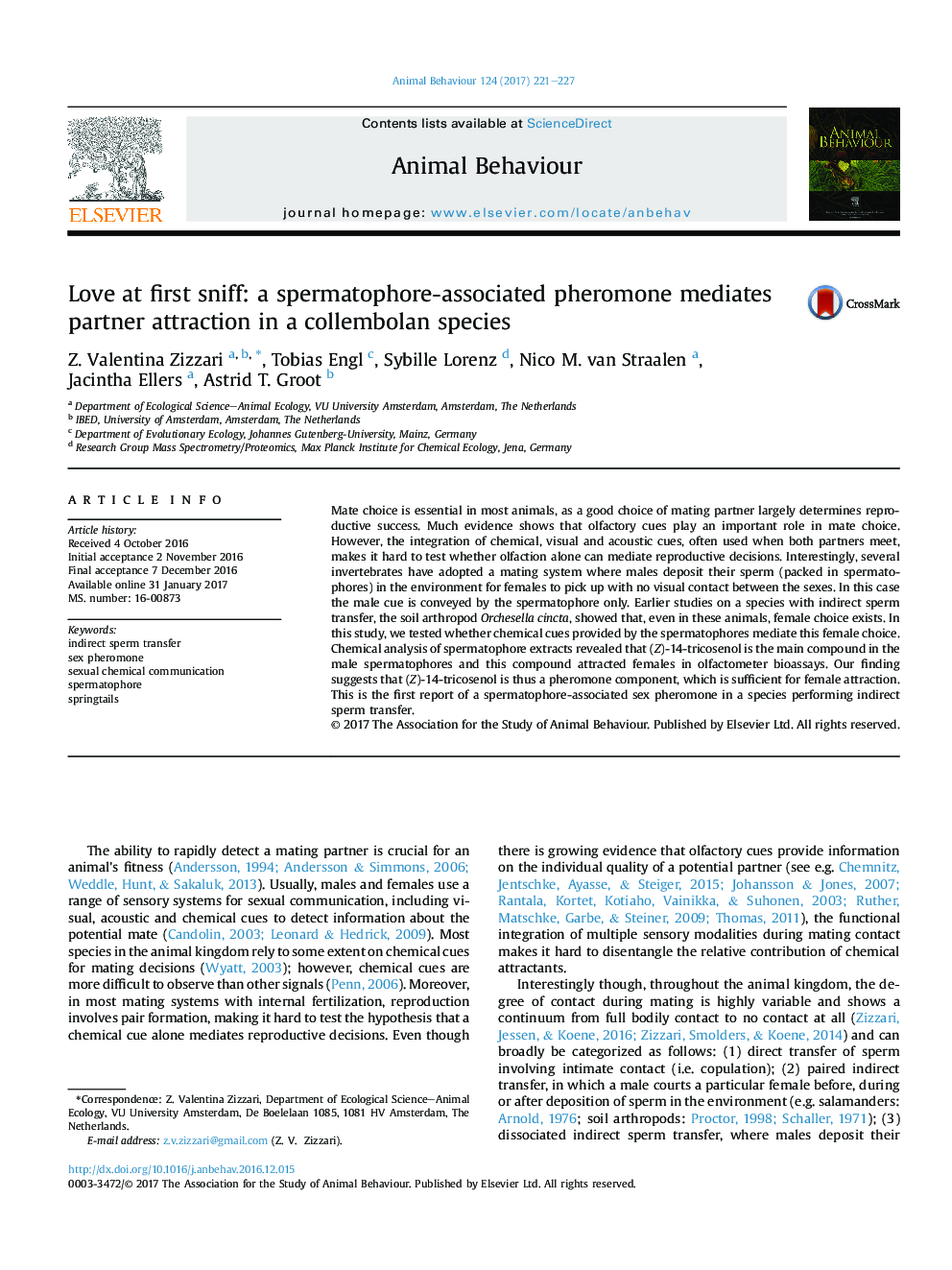| Article ID | Journal | Published Year | Pages | File Type |
|---|---|---|---|---|
| 5538641 | Animal Behaviour | 2017 | 7 Pages |
Abstract
Mate choice is essential in most animals, as a good choice of mating partner largely determines reproductive success. Much evidence shows that olfactory cues play an important role in mate choice. However, the integration of chemical, visual and acoustic cues, often used when both partners meet, makes it hard to test whether olfaction alone can mediate reproductive decisions. Interestingly, several invertebrates have adopted a mating system where males deposit their sperm (packed in spermatophores) in the environment for females to pick up with no visual contact between the sexes. In this case the male cue is conveyed by the spermatophore only. Earlier studies on a species with indirect sperm transfer, the soil arthropod Orchesella cincta, showed that, even in these animals, female choice exists. In this study, we tested whether chemical cues provided by the spermatophores mediate this female choice. Chemical analysis of spermatophore extracts revealed that (Z)-14-tricosenol is the main compound in the male spermatophores and this compound attracted females in olfactometer bioassays. Our finding suggests that (Z)-14-tricosenol is thus a pheromone component, which is sufficient for female attraction. This is the first report of a spermatophore-associated sex pheromone in a species performing indirect sperm transfer.
Related Topics
Life Sciences
Agricultural and Biological Sciences
Animal Science and Zoology
Authors
Z. Valentina Zizzari, Tobias Engl, Sybille Lorenz, Nico M. van Straalen, Jacintha Ellers, Astrid T. Groot,
